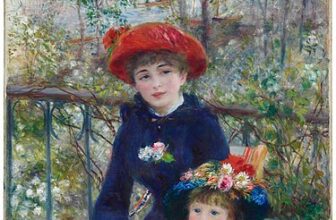Self-Portrait with Death Playing the Fiddle: The Enigmatic Masterpiece of Arnold Bocklin

Self-Portrait with Death Playing the Fiddle
Arnold Böcklin, the Swiss symbolist painter, is renowned for his enigmatic and haunting works that delve into the realms of myth, fantasy, and the macabre. Among his most captivating and mysterious creations is “Self-Portrait with Death Playing the Fiddle” (“Selbstbildnis mit fiedelndem Tod”), a mesmerizing canvas that invites viewers into a world of dark symbolism and existential introspection. Painted in 1872, this haunting masterpiece stands as a testament to Böcklin’s ability to explore the depths of the human psyche with unparalleled insight and creativity.
At first glance, “Self-Portrait with Death Playing the Fiddle” appears to be a conventional self-portrait—a depiction of the artist standing before an easel, brush in hand, as he gazes out at the viewer with a steady, unwavering gaze. Yet, upon closer inspection, the painting reveals itself to be a study in contrasts—a meditation on the fleeting nature of life and the inevitability of mortality.
In the foreground of the painting stands Böcklin himself, his features rendered with a meticulousness that borders on hyperrealism. He is dressed in the attire of a Renaissance artist—a nod, perhaps, to the timeless themes and archetypes that permeate his work. His expression is calm and composed, his gaze steady and contemplative, as if he is lost in thought or deep in concentration.
But it is the figure of Death that dominates the scene—a skeletal specter clad in a tattered cloak, its bony fingers clutching a violin as it plays a haunting melody that seems to echo through the ages. Death’s face is obscured by shadows, its eyes hidden behind the hollow sockets of a skull. Yet, despite its fearsome appearance, there is a sense of melancholy and resignation in its posture—a recognition of the inexorable passage of time and the futility of human endeavor.
What sets “Self-Portrait with Death Playing the Fiddle” apart is its rich symbolism and evocative imagery. The fiddle, traditionally associated with death and the underworld, serves as a potent symbol of mortality, its mournful strains evoking the transience of life and the inevitability of death. Böcklin’s use of chiaroscuro heightens the sense of drama and foreboding, casting the scene in an eerie half-light that blurs the boundaries between reality and fantasy.
Yet, for all its dark themes and unsettling imagery, “Self-Portrait with Death Playing the Fiddle” is also a work of profound beauty and emotional depth. Böcklin’s masterful use of color and composition imbues the painting with a sense of dynamism and vitality, drawing the viewer into its mysterious world with an almost hypnotic intensity. The juxtaposition of life and death, light and shadow, creates a tension and ambiguity that lingers long after the painting has been viewed.
In many ways, “Self-Portrait with Death Playing the Fiddle” is a reflection of Böcklin’s own existential angst and inner turmoil. Throughout his life, he grappled with feelings of alienation and disillusionment, struggling to reconcile his artistic vision with the demands of society and the expectations of his peers. Yet, despite the darkness that pervades his work, there is a sense of resilience and defiance in Böcklin’s portrayal of Death—a refusal to succumb to despair or nihilism, and a determination to confront the mysteries of existence with courage and curiosity.
Today, “Self-Portrait with Death Playing the Fiddle” remains as captivating and enigmatic as ever—a testament to Böcklin’s enduring legacy as one of the most visionary and influential artists of the symbolist movement. Through his haunting portrayal of mortality and the human condition, Böcklin invites us to confront our own fears and uncertainties, and to find solace in the knowledge that, in the face of death, art endures as a testament to the enduring power of the human spirit.






